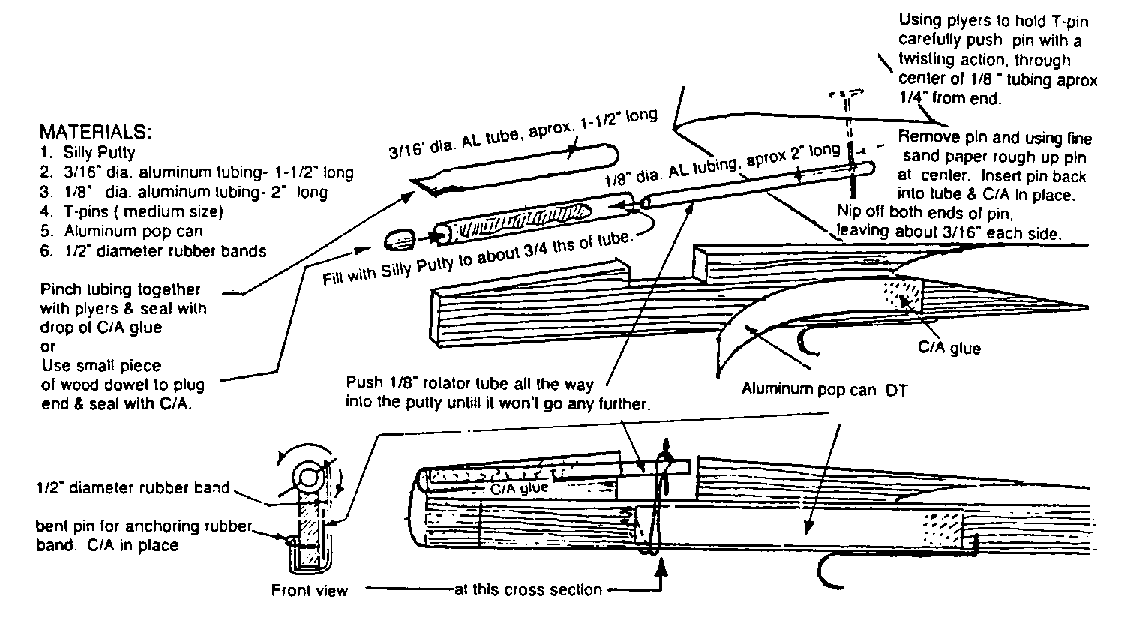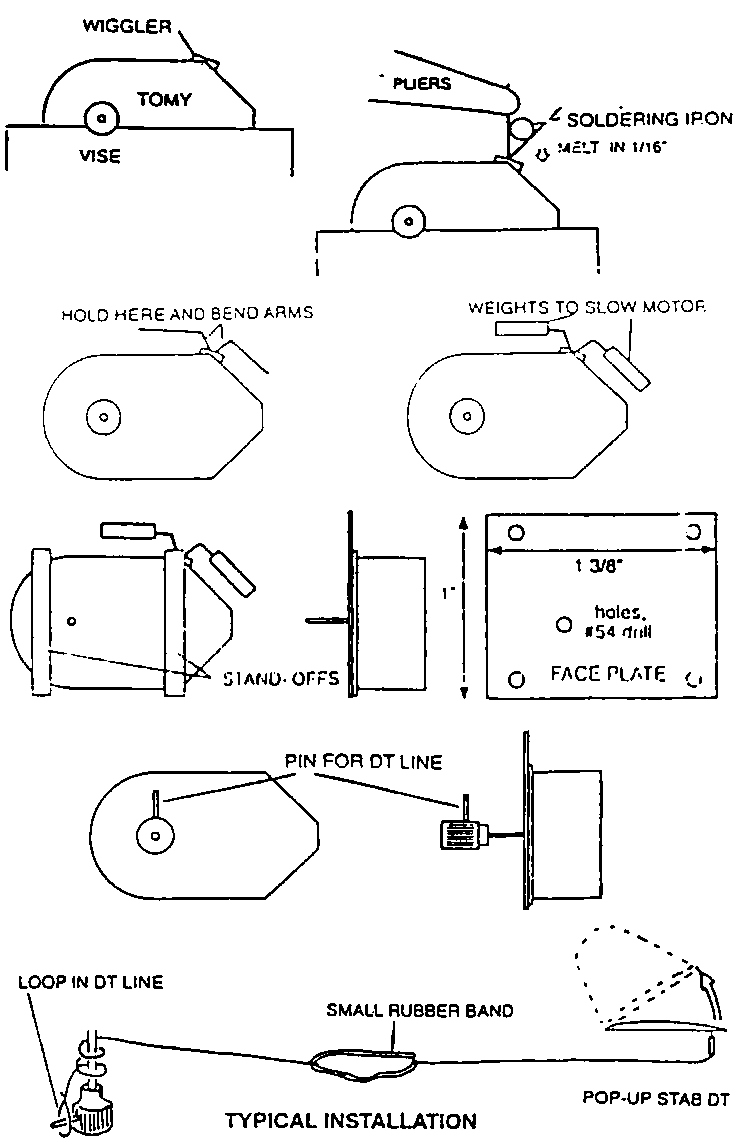| One of the bittersweet joys in model aviation is an out-of-sight flight by a Free Flight model.
While we all strive for our models to fly as well as we can, it is possible to have a model fly too well. Well trimmed, and with a bit of luck, a model may catch a thermal and climb to beyond the limits of our vision. It is the purpose of a dethermalizer to affect a change in the geometry of a model, such that it descends more rapidly, yet still safely. Getting the DT to activate after a target time is the job of a DT timer. Many designs have been used over the years, but current trends for simple single function timers have given us both the Tomy timer - modified from wind-up toys - and the Silly Putty timer, which makes use of that ever so popular gooey plastic substance sold in a plastic egg. Both are detailed below. | |
|
| |
The Silly Putty TimerThe Silly Putty Timer is a design of Hap McDaniels as described by John Delagrange in the August/September 1996 NFFS Digest. The timer is shown installed permanently on a catapult or HLG, though is easily adaptable to other types of FF models as well. Note that the timer will run for different durations based on ambient temperatures. Be sure to check the timer a couple of times to determine how many turns it takes to achieve a 2-2.5 minute run. Note the variations of length and diameter shown. Experimentation will help fine-tune the performance you need. | 
|
| (click below image to view a larger version) | |
Tomy TimersI believe this version of a Tomy Timer is originally a Don Srull design. The images are pretty much self explanatory, so I will just paraphrase the article. After carefully removing the guts from your favorite wind-up toy ....
|
|
Copyright 1998-2016, Thayer Syme. All rights reserved

